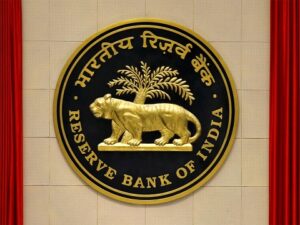On the Reserve Bank of India’s Public Tech Platform for Frictionless Credit.
Relevance
- GS Paper 3: Growth & Development, Mobilization of Resources, Issues Relating to Development, Banking Sector & NBFCs, Government Policies & Interventions.
- Tags: #upsc #bankingsector #NBFCs #resourcemobilization #governmentpolicies.
Why in the news?
The Reserve Bank of India (RBI) has initiated a pilot program aimed at evaluating the feasibility of a ‘Public Tech Platform for Frictionless Credit’, seeking to facilitate seamless and efficient credit delivery by lenders for Credit Appraisal, and therefore boosting Financial Inclusion in India.
- The initiative comes as part of RBI’s developmental and regulatory policies and was introduced following the Monetary Policy Committee (MPC) meeting in August 2023.
Frictionless credit
- Frictionless credit is a borrowing approach that seeks to streamline the lending process for consumers.
- Unlike the traditional credit systems, where individuals need to go through extensive paperwork, credit checks, and lengthy approval procedures, frictionless credit promises a smoother and faster experience.
What is the Public Tech Platform for Frictionless Credit?
- Developed by the Reserve Bank Innovation Hub (RBIH), It is an end-to-end digital platform that will have an open architecture, open Application Programming Interfaces (APIs), and standards to which all banks can connect in a “Plug and Play” Model.
- The public tech platform seeks to make this process seamless by providing all the required information in one place to facilitate credit.
Process
- The process of delivering credit through digital means involves Credit Appraisal, which evaluates the borrower’s ability to repay the loan and adhere to the credit agreement.
This process rests on three pillars
- Adverse selection (information asymmetry between borrowers and lenders).
- Exposure risk measurement.
- Default risk assessment.
Scope and Coverage
- Diverse Loan Types: The platform’s scope encompasses digital loans beyond KCC (Kisan Credit Card), including dairy loans, MSME loans without collateral, personal loans, and home loans.
- Data Integration: It will link with various services like Aadhar e-KYC, Aadhar e-signing, land records, satellite data, PAN validation, transliteration, account aggregation by account aggregators (AAs), and more.
What are the Benefits and Outcomes?
- Enhanced Credit Portfolio Management: The platform’s data consolidation will enable improved credit risk assessment and efficient credit portfolio management. Improved Access to Credit: Access to accurate information supports informed and swift credit assessments. This expansion of credit availability benefits borrowers by lowering the cost of capital access.
- Reduced Operational Costs: The platform addresses operational challenges such as multiple visits and documentation requirements, leading to cost reduction for both lenders and borrowers. RBI’s survey indicated that processing of farm loans took two to four weeks and cost about 6% of the loan’s total value.
- Efficiency and Scalability: The platform’s streamlined processes lead to quicker disbursement and scalability, resulting in a more efficient credit ecosystem.
What is the Significance of Financial Inclusion and Access to Credit in Economic Growth?
- Reduced Income Inequality: Financial inclusion ensures that all segments of society, including low-income individuals and marginalized groups, have access to essential financial services. This empowers them to save, invest, and access credit, reducing income disparities and fostering more equitable economic growth.
- Entrepreneurship and Innovation: Access to credit enables aspiring entrepreneurs to start and expand businesses. This leads to increased job creation, innovation, and economic diversification, all of which contribute to higher GDP (Gross Domestic Product) growth and overall prosperity.
- Poverty Alleviation: Financially excluded individuals often face barriers to economic progress. Providing access to credit allows them to invest in education, healthcare, and income-generating activities, breaking the cycle of poverty and enhancing overall human development.
- Infrastructure Development: Adequate credit access is essential for funding large-scale infrastructure projects. These projects, such as transportation, energy, and communication networks, provide the necessary backbone for sustained economic growth.
- Rural Development: In agrarian economies, access to credit can enable farmers to invest in modern agricultural practices, leading to increased productivity and rural development. This, in turn, supports overall economic growth.
- Financial Stability: A well-functioning credit market contributes to financial stability by diversifying funding sources for individuals and businesses. It reduces dependence on informal lending, which can be more volatile and risky.
Therefore using technologies for financial inclusion is not the only way forward to achieve inclusive growth, but it also required appropriate measures and coordination among different stakeholders to fulfil the promise of ‘reaching the unreached.’
Source: The Hindu
Mains Question
What do you mean by fictionless credit card. Discuss its features and challenges. Also highlight how it will be helpful in addressing the issue of financial inclusion.




